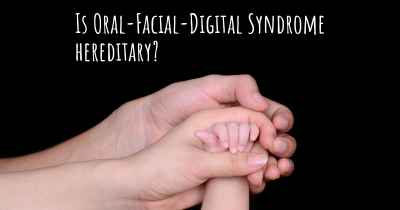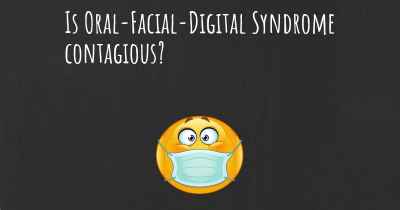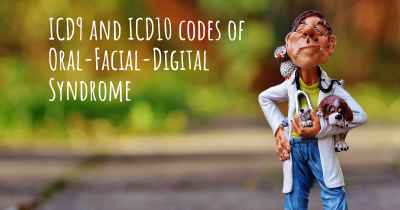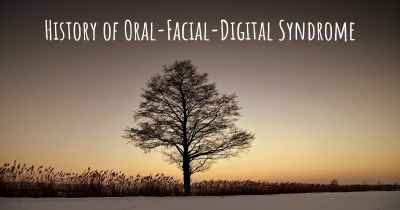What is the life expectancy of someone with Oral-Facial-Digital Syndrome?
Life expectancy of people with Oral-Facial-Digital Syndrome and recent progresses and researches in Oral-Facial-Digital Syndrome
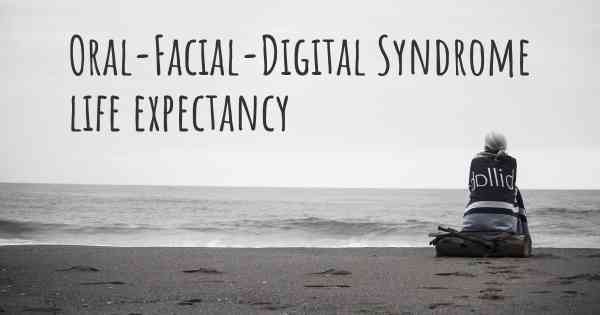
Oral-Facial-Digital Syndrome (OFDS) is a rare genetic disorder that affects the development of the face, oral cavity, and digits. The life expectancy of individuals with OFDS can vary depending on the specific subtype and associated complications. Some subtypes may have more severe manifestations and can be associated with significant health issues, which may impact life expectancy. It is important for individuals with OFDS to receive comprehensive medical care and management of associated symptoms to optimize their quality of life. However, it is crucial to consult with healthcare professionals who can provide personalized information and guidance based on the specific subtype and individual circumstances.
Oral-Facial-Digital Syndrome (OFDS) is a rare genetic disorder that affects the development of the face, oral cavity, and digits. It is a heterogeneous condition, meaning that it encompasses a group of related disorders with overlapping symptoms. There are at least 13 different types of OFDS identified so far, each with its own unique set of characteristics and severity.
The life expectancy of individuals with OFDS can vary significantly depending on the specific type and the severity of the symptoms. Some forms of OFDS are associated with more severe complications and can have a significant impact on overall health and lifespan, while others may have milder symptoms and a relatively normal life expectancy.
OFDS Type I, also known as Papillon-Lefèvre syndrome, is characterized by palmoplantar keratoderma (thickening of the skin on the palms and soles) and severe periodontitis (inflammation of the tissues surrounding the teeth). Without proper dental care, individuals with this type of OFDS may experience early tooth loss, which can affect their ability to eat and speak properly. However, with appropriate management and treatment, the life expectancy of individuals with OFDS Type I can be near-normal.
OFDS Type II is associated with more severe symptoms, including cleft lip and/or palate, tongue abnormalities, and polydactyly (extra fingers or toes). This type of OFDS can also involve malformations of the brain, kidneys, and other organs. The life expectancy of individuals with OFDS Type II can be reduced due to the potential complications associated with these malformations.
OFDS Type III, also known as Mohr syndrome, is characterized by oral abnormalities, such as cleft lip and/or palate, as well as limb abnormalities, including syndactyly (fusion of the fingers or toes). Individuals with OFDS Type III may also have intellectual disabilities and other health issues, such as heart defects. The life expectancy of individuals with OFDS Type III can be variable, depending on the severity of the associated complications.
OFDS Type IV is characterized by tongue abnormalities, such as bifid or lobulated tongue, as well as oral clefts and digital anomalies. This type of OFDS can also involve kidney and brain abnormalities. The life expectancy of individuals with OFDS Type IV can be influenced by the severity of these associated complications.
OFDS Type VI is associated with oral abnormalities, such as cleft lip and/or palate, as well as digital anomalies. This type of OFDS can also involve kidney and brain abnormalities. The life expectancy of individuals with OFDS Type VI can vary depending on the severity of the associated complications.
It is important to note that the life expectancy mentioned for each type of OFDS is a generalization and may not apply to every individual. The management and treatment of OFDS involve a multidisciplinary approach, including medical, dental, and surgical interventions, as well as supportive care and early intervention for associated complications. Regular monitoring and follow-up with healthcare professionals specializing in genetic disorders can help optimize the quality of life and potentially improve the life expectancy of individuals with OFDS.
Posted Feb 3, 2020 by carolyn 2170

